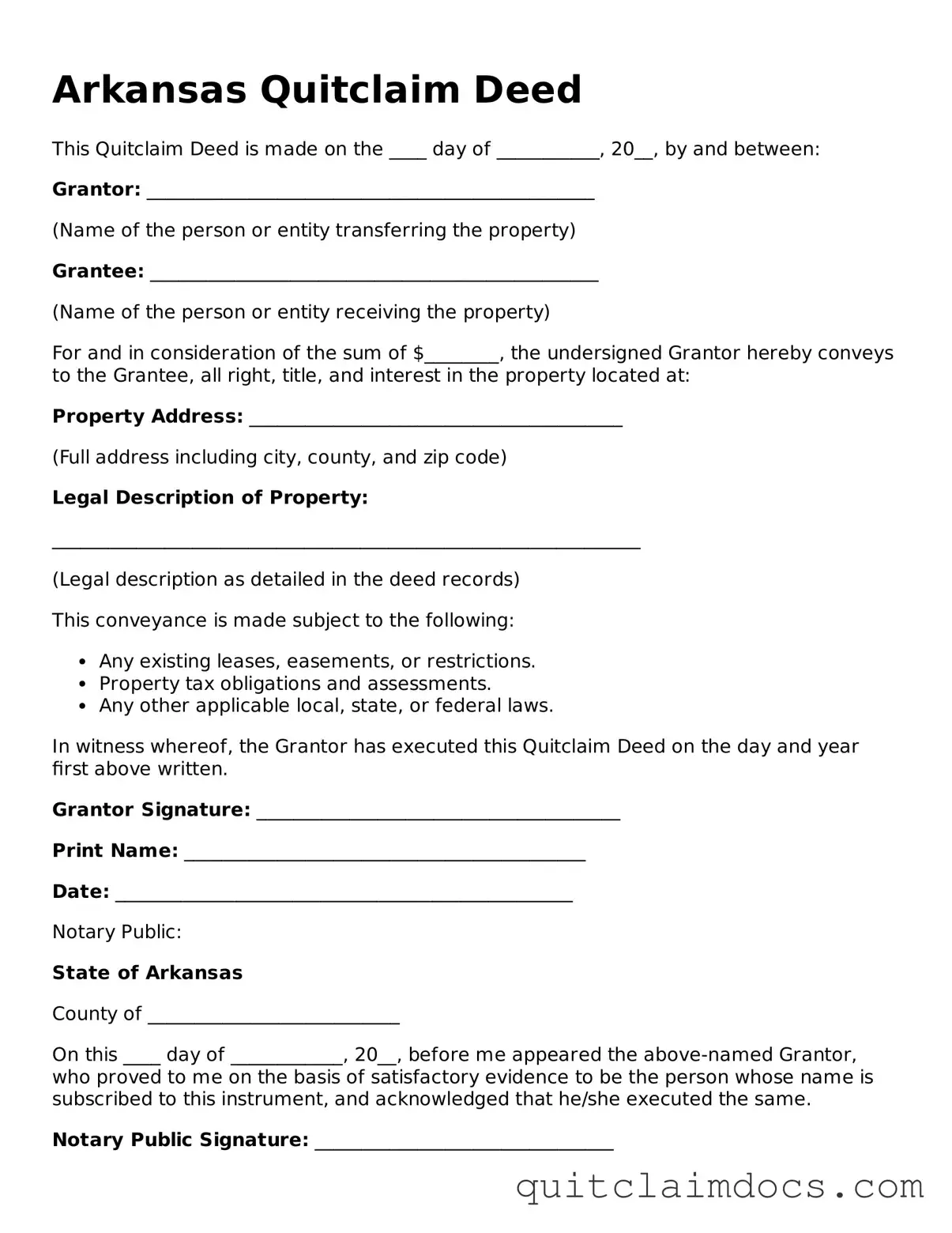Arkansas Quitclaim Deed
This Quitclaim Deed is made on the ____ day of ___________, 20__, by and between:
Grantor: ________________________________________________
(Name of the person or entity transferring the property)
Grantee: ________________________________________________
(Name of the person or entity receiving the property)
For and in consideration of the sum of $________, the undersigned Grantor hereby conveys to the Grantee, all right, title, and interest in the property located at:
Property Address: ________________________________________
(Full address including city, county, and zip code)
Legal Description of Property:
_______________________________________________________________
(Legal description as detailed in the deed records)
This conveyance is made subject to the following:
- Any existing leases, easements, or restrictions.
- Property tax obligations and assessments.
- Any other applicable local, state, or federal laws.
In witness whereof, the Grantor has executed this Quitclaim Deed on the day and year first above written.
Grantor Signature: _______________________________________
Print Name: ___________________________________________
Date: _________________________________________________
Notary Public:
State of Arkansas
County of ___________________________
On this ____ day of ____________, 20__, before me appeared the above-named Grantor, who proved to me on the basis of satisfactory evidence to be the person whose name is subscribed to this instrument, and acknowledged that he/she executed the same.
Notary Public Signature: ________________________________
My Commission Expires: _________________________________
